I need to fit a 2D gaussian embedded into substantial uniform noise, as shown in the left plot below. I tried using sklearn.mixture.GaussianMixture with two components (code at the bottom), but this obviously fails as shown in the right plot below.
I want to assign probabilities to each element of belonging to the 2D Gaussian and to the uniform background noise. This seems like a simple enough task but I've found no "simple" way to do it.
Any advices? It doesn't need to be GMM, I'm open to other methods/packages.
import numpy as np
import matplotlib.pyplot as plt
from sklearn import mixture
# Generate 2D Gaussian data
N_c = 100
xy_c = np.random.normal((.5, .5), .05, (N_c, 2))
# Generate uniform noise
N_n = 1000
xy_n = np.random.uniform(.0, 1., (N_n, 2))
# Combine into a single data set
data = np.concatenate([xy_c, xy_n])
# fit a Gaussian Mixture Model with two components
model = mixture.GaussianMixture(n_components=2, covariance_type='full')
model.fit(data)
probs = model.predict_proba(data)
labels = model.predict(data)
# Separate the two clusters for plotting
msk0 = labels == 0
c0, p0 = data[msk0], probs[msk0].T[0]
msk1 = labels == 1
c1, p1 = data[msk1], probs[msk1].T[1]
# Plot
plt.subplot(121)
plt.scatter(*xy_n.T, c='b', alpha=.5)
plt.scatter(*xy_c.T, c='r', alpha=.5)
plt.xlim(0., 1.)
plt.ylim(0., 1.)
plt.subplot(122)
plt.scatter(*c0.T, c=p0, alpha=.75)
plt.scatter(*c1.T, c=p1, alpha=.75)
plt.colorbar()
# display predicted scores by the model as a contour plot
X, Y = np.meshgrid(np.linspace(0., 1.), np.linspace(0., 1.))
XX = np.array([X.ravel(), Y.ravel()]).T
Z = -model.score_samples(XX)
Z = Z.reshape(X.shape)
plt.contour(X, Y, Z)
plt.show()

